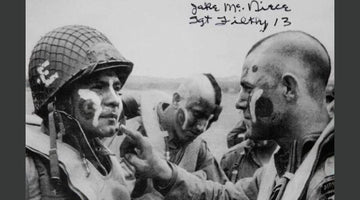The Airborne Lifeline of D-Day!
In the early hours of June 6, 1944, the skies over Normandy were filled with the droning hum of countless aircraft. Below, the coast of France bristled with enemy defenses. This was D-Day, the beginning of the Allied invasion of Nazi-occupied Europe, and the largest amphibious assault in history. Amidst this grand operation, a humble yet critical player silently fulfilled its role—hemp.
As American paratroopers of the 82nd and 101st Airborne Divisions prepared to jump into the darkness, they relied on the strength and reliability of their parachutes. The lines that would carry them safely to the ground were made from American-grown hemp, a crop that had been thrust back into prominence by the exigencies of war.
The United States, facing a dire shortage of durable fibers, had resurrected hemp production through the "Hemp for Victory" campaign. This initiative encouraged farmers to cultivate hemp, a plant that had been sidelined by the Marihuana Tax Act of 1937. Fields across the heartland, from Kentucky to Iowa, were once again lush with the tall, sturdy stalks of hemp.
The fibers from these plants were processed and spun into the ropes and lines essential for the military. Parachute lines, in particular, demanded exceptional strength and durability—qualities that hemp provided in abundance. Once harvested, the hemp was retted, dried, and meticulously processed to extract the long, strong fibers needed for the task.
On that fateful night, as paratroopers jumped from their planes, their lives depended on these fibers. The parachutes opened, deploying lines crafted from the very fabric of American soil, bringing soldiers safely down into the chaos below.
Amidst the darkness and confusion of the drop zones, those parachute lines were silent lifelines, woven with the strength and resilience that mirrored the spirit of the men they carried. The success of the airborne operations on D-Day was a testament not only to the bravery of the soldiers but also to the crucial role of American agriculture and ingenuity.
Hemp, once a cornerstone of colonial and early American life, had been revived to serve in the fight for freedom. Its fibers had become part of the arsenal that enabled the Allies to breach Fortress Europe and begin the liberation of the continent.
As the paratroopers hit the ground and began their mission, they carried with them not only their weapons and gear but also the legacy of a plant that had once been essential to their nation's survival. Hemp, in its own quiet way, was a hero of D-Day.
After the war, hemp fields gradually disappeared, replaced by other crops and synthetic materials. Yet, for that pivotal moment in history, hemp had proven its worth, contributing to one of the most significant military operations ever undertaken.
Image Historical Note:
In a striking image from June 5, 1944, Filthy Thirteen members applying war paint. This powerful act, inspired by SGT Jake McNiece to honor his Native American heritage, was meant to energize and unify the men for the perilous mission ahead. The Filthy Thirteen, a renowned demolition unit of the 101st Airborne Division, played a crucial role in the D-Day invasion, embodying the courage and resilience of the airborne forces.
Airborne!
Filthy Thirteen images is courtesy of Wikipedia.

